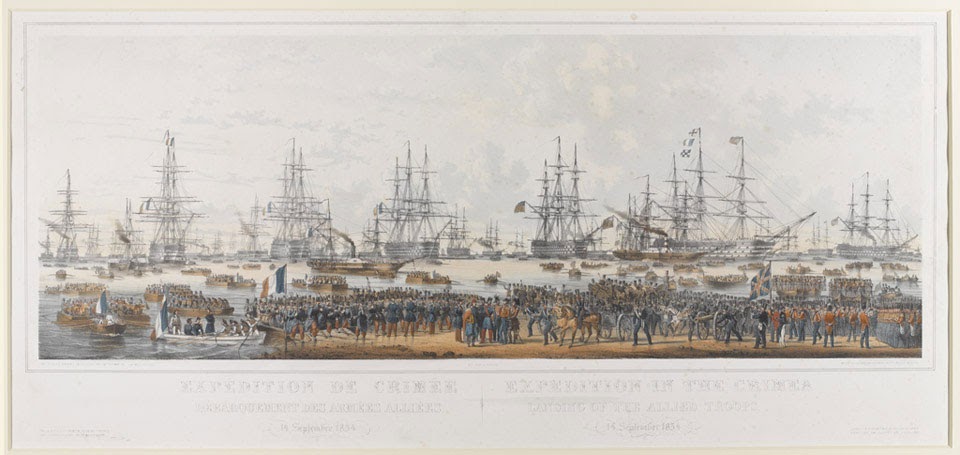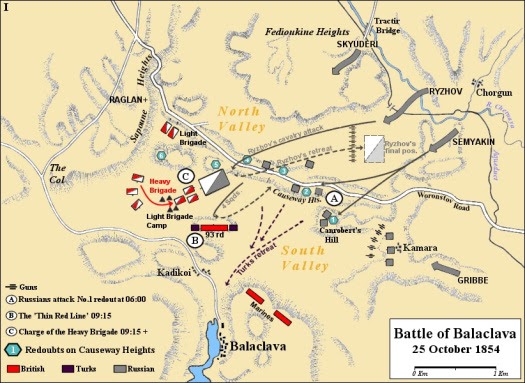The Charge of the Light Brigade

As the Ottoman Empire waned, Russia saw an opportunity to acquire land. European powers were afraid that this would ruin the balance of power declared in the Congress of Vienna. Thus, England and France went to support the Ottoman Empire.
Battle of Balaclava
Build Up: Siege of Sevastopol and Encampments
In September 1854, the English, French, and Ottomans moved towards Sevastopol, Crimea, an important Russian naval base, to initiate a siege on the city. The Russian commander, Prince Menshikoff, evacuated many of his troops from the city. The British set up an encampment in the port of Balaclava to supply materials for the siege.

Colored lithograph by Max Beeger and A Faure, 1854, Collection of The National Army Museum
Layout of the Land

Battle of Balaclava - 'Thin Red Line' and Charge of the Heavy Brigade. Based on map in Trevor Royle's Crimea: The Great Crimean War 1854-1856
Causeway Heights:
The Waronstov Road on the Causeway Heights was the critical pathway to connect the British supply port with the siege lines at Sevastopol.
Sapoune Ridge
British High Command
South Valley
The Cavalry Encampment (Light and Heavy Brigade)
Fedioukine Heights
Russian troops who left Sevastopol
Charge of the Heavy Brigade
The Russians launched an assault on the Ottoman guarded Causeway Heights, forcing them to retreat from the vital supply route.
The Russians then moved down towards Balaclava, attempting to overwhelm the defense. Blocking the Russian attack was the Scottish 93rd Highland Regiment, which was surprisingly successful in holding back the Russian charge.
The Heavy Brigade, under General Scarlett, charged uphill back up the Causeway Heights, forcing the Russians to retreat.
The Light Brigade had an opportunity to follow up the retreat, but Lord Cardigan decided against this, allowing the Russians to escape and upsetting Lord Raglan. Captain Nolan, who wanted to prove the value of the cavalry, was also furious.

Bugle used by Trumpet-Major Henry Joy of the 17th Light Dragoons (Lancers) during the Charge of the Heavy Brigade, 1854, Collection of
The National Army Museum
Retreat
The Russian troops started to secure the guns that they captured on the Causeway Heights. Thus, began the main act.
* Banner: Oil on canvas by Richard Caton Woodville (1856-1927), 1897, Collection of The National Army Museum